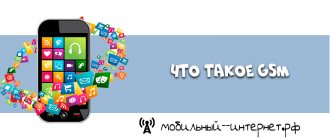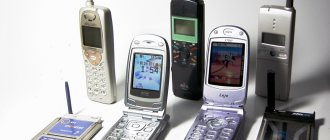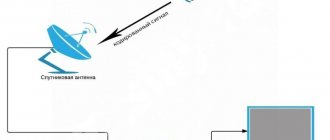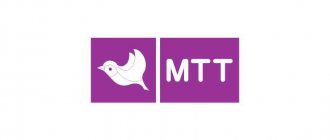"The Last of the Mohicans"
The Crimean cellular operator Intertelecom, which operated in the CDMA-800 standard, has ceased operation. As stated on the operator’s website, its license expired on January 1, 2021, and Roskomnadzor refused to renew it.
Intertelecom subscribers located in the federal city of Sevastopol are invited to switch to the network of the company's partner - the cellular operator Sevtelecomsvyaz (STS, trademark Sevmobile). Intertelecom subscribers located in the territory of the Republic of Crimea, together with Sevastopol located on the Crimean peninsula, are not offered this opportunity.
The press service of Roskomnadzor confirmed to CNews that Intertelecom’s license to operate in the CDMA-800 standard was not extended. This is due to the lack of a decision from the State Commission on Radio Frequencies (SCRF) on the allocation of the appropriate frequencies.
At the last meeting of the SCRF, held on December 27, 2021, the commission made a negative decision on the issue of extending the period of use of frequencies in the 800 MHz range in Crimea. Knowing this, Intertelecom did not even submit an application to Roskomnadzor to extend the validity of its license, the department’s press service emphasized.
CDMA Features
There are two main resources in a radio system: time and frequency. Time sharing involves allocating all or most of the spectrum to the receiver and transmitter for a certain time. Frequency division is the allocation of a part of the spectrum for the entire duration of the connection. Accordingly, in the GSM network the subscriber is limited in talk time or channel width.
In CDMA, the entire spectrum and time are allocated for each subscriber, and the entire channel width of 5 GHz is used for signal transmission, versus 200 kHz per channel in GSM. Each transmitter inside the mobile device modulates the signal using an assigned code, which is able to be isolated by the cell tower receiver and transmitted to the receiver of another subscriber. Thanks to the use of the entire channel width, the quality of communication is noticeably better than in GSM, and also cleaner due to the absence of noise. In addition, the CDMA network is safer, since subscribers' broadcasts overlap each other and isolating a specific signal from the air is not so easy.
Another feature of CDMA is the ability to work without a SIM card. In this case, the number is sewn into the device through software using a computer, after which the mobile device works like a regular GSM phone. Therefore, most CDMA devices are produced without a slot for installing a SIM card. If the phone or smartphone is equipped with a card slot, then traditional installation using an R-UIM card is possible.
CDMA smartphone Motorola Droid X^2.
In addition, compared to GSM, CDMA uses less energy to operate, which means the mobile device lasts longer on a single battery charge. Moreover, energy consumption is affected by the distance to the base station. The closer the tower, the lower the energy consumption.
How CDMA operators appeared and disappeared in Russia
The CDMA standard has a difficult fate in Russia. CDMA networks in the 800 MHz band began to appear in the late 1990s. However, in the early 2000s, the authorities declared “war” on this standard: it was decided to give the 800 MHz range to digital television, and existing operators were allowed to operate only until 2010. The largest operator of the CDMA-800 standard, Moscow Sonet, ceased operations in 2005 ., the remaining operators closed over the next few years.
Announcement of Intertelecom about the termination of work in the CDMA-800 standard
At the same time, the CDMA standard began to develop in a different range - 450 MHz. Most of these operators became part of the Sky Link holding, but by now all CDMA-450 operators have also stopped operating. The current owner of Sky Link, the operator Tele2, launched LTE-450 standard on the operator’s frequencies in a number of regions.
In Ukraine, operators of the CDMA-800 standard were also initially limited, but in the mid-2000s, on the contrary, the country's authorities gave them the green light. In 2014, at the time of the reunification of Crimea and Russia, there were two CDMA-800 standard operators on the peninsula: Intertelecom and PeopleNet.
Evolution
The stated conclusions are applicable primarily from the point of regular telephone communication, but conversations have long become just one of the services of operators against the backdrop of Internet access.
Initially, the GSM standard provided the highest possible data transfer speed of up to 9.6 kbit/s. GPRS and EDGE technologies, which belong to the 2G generation, made it possible to accelerate to a theoretical 474 kbit/s. The third generation of UMTS GSM networks uses WCDMA technology for data transmission, which is a derivative of CDMA and uses a similar code division. Further development of technologies and the introduction of HSPA+ and DC-HSDPA (for example, by Kyivstar and Life) provide a theoretical data exchange rate of 42.2 Mbit/s (Kyivstar, combining two “carriers”) or even 63.3 Mbit/s (“Life”, three “carriers”).
The original CDMA had a greater safety margin and provided data rates of up to 153 kbit/s. Subsequent phases of the development of the standard are already classified as 3G networks; EV-DO technology is used for data transmission. Depending on the implemented generation of the standard (Rev.), the maximum data transfer rate in such a network varies from 2.4/0.153 Mbit/s (Rev. 0, upload/download) to 73.5/27 Mbit/s (Rev. B) . Naturally, the figures given for each standard are theoretical; it is impossible to achieve such speeds for all connected subscribers and the actual access speed turns out to be several times lower. Plus, it all depends on the implemented technologies. For example, Intertelecom in large cities operates on the Rev standard. B and provides speeds of up to 14.7 Mbps.
Thus, in theory, it is possible to further develop 3G networks and increase data transfer speeds, but from a practical point of view, the solution looks dubious. The available speeds cover user requests well (if you don’t come up with crazy scenarios with torrent distribution 24/7), and the technology includes backward compatibility with 2G networks and support for older phones.
Exception for Crimea
PeopleNet immediately left Crimea, while Intertelecom sold the Crimean network to the company of the same name, registered in Russian jurisdiction. This company managed to agree with the Russian authorities to continue working, as a result of which the Crimean Intertelecom was the only cellular operator of the CDMA-800 standard in Russia.
Will AI replace human empathy in contact centers?
Artificial intelligence
In Crimea, their own cellular operators gradually began to appear in the GSM, 3G and LTE standards. The first was K-Telecom (Win Mobile trademark), which used the infrastructure of the Crimean subsidiary MTS-Ukraine. Later, the operators KTK-Telecom (trademark Volna Mobile), Krymtelecom and the mentioned STS appeared.
Krymtelecom and STS operate in different parts of the Crimean peninsula: in the Republic of Crimea and in the city of Sevastopol, respectively. At the same time, subscribers of both operators enjoy roaming-free space when traveling around the peninsula.
Krymtelecom provides both mobile and fixed-line services. The operator belongs to the authorities of the republic. STS is 51% owned by the Moscow system integrator IT-Progress (part of the Progress group), 49% by the fixed-line operator Sevastopol-Telecom, created by the authorities of Sevastopol.
Roskomnadzor has a license that allows you to work as a virtual cellular operator in the Crimea and Sevastopol. Intertelecom continues to operate in Sevastopol as a virtual operator based on the STS network.
Differences from GSM
Let us highlight the differences between the technology described above and GSM. Despite the fact that both standards belong to the same generation, they have a slight difference in operating principles:
- Ability to interact with frequency resources. GSM uses time and frequency separated channels, while the second technology is based on code division channels;
- The SDMA frequency band is wider than that of its competitor, which improves the quality of speech transmission and reduces the level of interference;
- Lower energy consumption, since the signal power is significantly reduced and depends on the distance to the base station;
- SDMA has a large station capacity, wide range and easy network setup.
What is the difference between WCDMA and CDMA - WCDMA technology is a derivative of SDMA and belongs to the third generation of mobile communications (3G). At the moment, these technologies cannot be used simultaneously and are a transitional stage to the latest standard - LTE.
Smartphones
In this part of the section, we will discuss dual-standard smartphones. At the moment, both second-generation standards described above are widespread throughout the world and cannot be used simultaneously - but there is one exception.
These are special devices designed for use in two networks simultaneously - the capabilities are expanded by installing special software. Smartphones are equipped with the ability to receive signals in two different ways, specific to these networks.
There are quite a large number of smartphone manufacturers offering dual-band products with two SIM cards - these are giants such as Xiaomi, Lenovo, Huawei, HTC and many others. In addition, you can purchase a modem that operates in the desired range.
The CDMA standard is not as popular as the well-known and beloved GSM operators. However, it has its advantages and benefits. Therefore, when buying a new cell phone, you should pay special attention to CDMA-GSM phones. This will be the best option.
WCDMA standard
It is widely distributed in Japan. This technology is used in high-speed transmission of various multimedia, video conferencing and Internet access. China is also a leader in the use of such networks, but along with WCDMA, TD-SCDMA and CDMA-2000 networks are being promoted here.
If we talk about the principle of operation, we can say that this is also a multiple access system with code division of existing channels and direct expansion of the spectrum of action. At the same time, the flow rate reaches 384 kbit/s, and the bandwidth is up to 5 MHz. This is achieved through multi-code combinations and the use of a variable spreading factor.
The main advantage of this communication standard is that it does not have a global time reference and GPS. Therefore, it can work regardless of the city or country in which it is located. This is also the difference between CDMA GSM phones (Odessa is also covered by this network).
Another significant factor in favor of this standard is its air interface. It works in such a way that you can easily use not only multi-user reception, but also intelligent configuration of the necessary adaptive antennas. This contributes to a significant increase in coverage and throughput.









